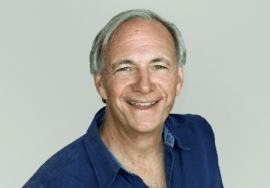

Uber – a disruptive innovator or a distorter of the taxi/transport service market?


Case study by: Armin Bushati
Founded in 2009, Uber Technology Inc. is the world’s largest passenger transportation provider. Based in San Francisco, California, Uber operates in 65 countries and covers more than 600 cities. The service is provided digitally, where taxis can be called through the Uber app, which is available for Android and IOS. The efficient peer-to-peer business model used by Uber connects those who need the service, with those who can provide the service.
Uber, in less than a decade has managed to grow significantly. Another way to explain Uber’s effect on society may be that the services provided by the company have distorted the operation of the taxi business, it has not disrupted it.
This opens a market for disruptors by initially focusing on low-end customers and providing “good enough” services. Disruption of a new market occurs when a market is created for non-consumers.
It can’t be said with certainty that Uber started at the lower end of the taxi market, the one that would have been left behind when the overtime taxi market tried to add features in order to improve its offers to existing customers, inevitably using the more expensive taxi or beyond the means of a regular taxi customer who could not afford the high fares and keep up with natural innovation in the taxi market. When Uber launched in San Francisco, it was already a well-serviced taxi market.
The services provided by Uber from the beginning have lived up to customer demands. The quality of services provided by Uber is maintained through the fantastic rating and feedback features available on the Uber app for customers and drivers. Uber at launch had everything it needed to target mainstream customers. Uber has changed the dynamics of the taxi industry.
Uber was the first company to offer ride-sharing services through a digital platform. Even though, Uber cannot be considered a disruptive innovation due to the points explained above, it has definitely caused a digital disruption in the transportation market.
Uber has succeeded in generating value by improving the consumer’s taxi sourcing capability in terms of time saving and simple operation procedure. Disruptive is the technology it used that helped Uber build a massive consumer base.
Uber provides a system for drivers and passengers to interact without the need for third parties.
This helps Uber save on employee tariffs in call centers. Uber managed to take advantage of this opportunity by offering a better transport / taxi service than city taxis.
Uber’s biggest advantage in the US was the use of private vehicles. For example, in Karnataka, India, Uber is required to comply with taxi service tariffs, while West Bengal has a regulation that requires taxis to be equipped with CCTV cameras for safety reasons. To maintain the quality of services, Uber also provides drivers and customers with the opportunity to evaluate trips and make assessments based on their experiences. This helped Uber expand the market for the portion of the population that could not afford Uber’s call / order before.
The company also encouraged the system where 2 to 3 drivers can drive the same car. Uber has also diversified the services it offers.
The company has expanded its business in the food sector by creating an Application called UBER eats which deals with the distribution of food from restaurants to the customer’s location.
UBER FREIGHT is another free application that connects carriers with consignors, where carriers can immediately book the cargo they want to transport. Overall, Uber has managed to introduce a successful business to the market based on a simple idea, “How would you request transportation / taxi service over your phone?”








